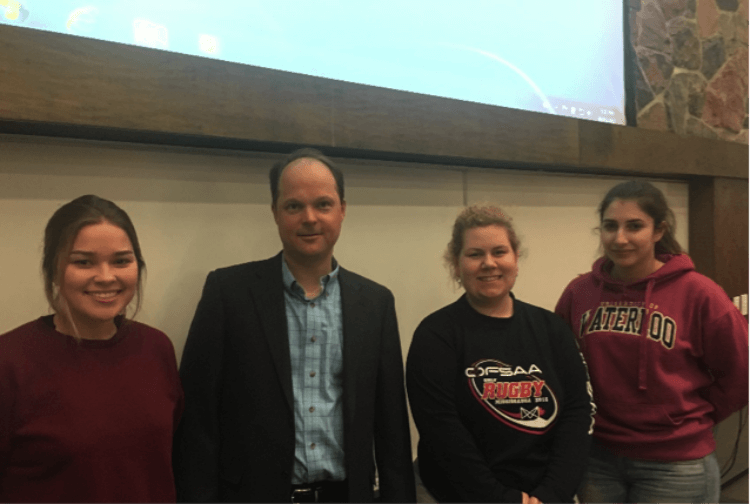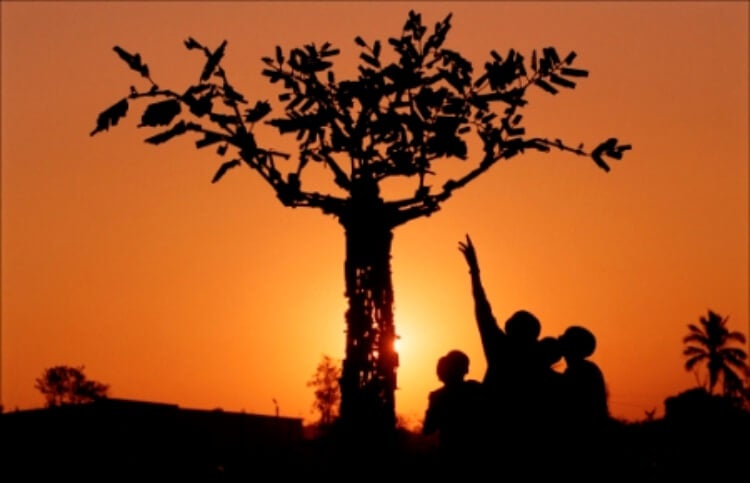
Contrary to popular belief, conflict in development can be used as a catalyst for positive change. Cultural pluralism is the idea that every context embodies its own unique cultural identity; guest lecturer Professor Nathan Funk suggests that because of cultural pluralism, the method to which a country deals with conflict in one place, may not be a possible solution in another. Nathan Funk is an associate Professor in Peace and Conflict Studies at Conrad Grebel University College; he has obtained a BA at Gustavus Adulphus College, and a PhD at American University. He uses the reconciliation practices of African nations to emphasize this concept; these practices are highly effective ways of resolving conflict, however could be viewed as inappropriate or unconventional in other areas of the world. One size will never fit all, but it is important to highlight the effectiveness of local cultural practices and try to shape them to suit different places; thus, achieving peace and development.
Professor Funk mentioned in his lecture how peace and development should be constructed locally. This statement caused us to wonder, if peace and development is constructed locally, how can we broaden and expand these practices internationally? Or will each culture and community be peaceful within its own borders and not within the world? Throughout his lecture Funk referenced John Paul Lederach and his approaches to Peace and Resolution. John Paul Lederach who received a B.A. in History and Peace Studies from Bethel College in 1980 and a Ph.D. in Sociology from the University of Colorado in 1988 wrote numerous articles and novels about his international experiences with peacemaking efforts. Lederach saw peace building as a cultural activity shaped by local meaning. Lederach believes that it takes knowledge and approaches from various communities to be able to strive towards a transformation in development and conflict.
Different countries approach peace and resolution differently. For example, in Ubuntu, South Africa people believe in a hospitable, forgiving and generous environment, and they live by the motto of “a person is a person through other persons”. Ubuntu provides ground for dealing with injustice; people can come forward, and people can speak about how they feel their human rights are being violated. Whereas in Mato Oput, Uganda, they have their own traditions when it comes to reconciliation. Ugandans believe in the drinking of the “Bitter Root”. The process of reconciliation begins with both parties (villain and victim) kneeling before a liquid that they must drink together. The Bitter Root has a very unpleasant taste, which is significant in the reconciliation process because both parties must overcome this obstacle together in order to move on collectively through life; the root is symbolic in showcasing the pain and suffering both parties have experienced and the sacrifices they are willing to make in order to restore their relationship.

Much like Ubuntu, Uganda and Mozambique, the rest of the world is also working towards finding effective methods of conflict resolution. Because these African methods have proven to be effective, they should be used as learning tools for other countries. Everyone experiences conflict differently, and therefore everyone has different methods to reconcile with these conflicts. Cultural pluralism, the notion that each community has its own cultural identity, is very important when dealing with development. Because every community, every person, every culture is different, the world must be aware of these differences in order to spark change and development. The biggest problem is that there is very little awareness on these effective conflict resolution methods. This idea of awareness goes hand in hand with Professor John Paul Lederach’s beliefs, which are that peace building is a cultural activity shaped by local meaning, and we have to use different resources and meanings in order to find what works for us. Therefore, when there is awareness of effective reconciliation methods in the world, other countries can draw from them and shape them to fit their own customs and cultures. Lederach believes in asking instead of telling when it comes to peace and development. The belief is that we must seek local insight before initiating any forms of change. Ideas are not concrete information, but instead we must take lessons from other countries experiences and develop them further with our own experiences, knowledge and personal reflections (Wright) This is a mosaic approach towards peace and development which states that cultural diversity is a resource and we should look at “what that culture does well” and take that information and use it to build off of our existing strengths. Having an awareness of the link between cultural pluralism and conflict resolution will be the building blocks for positive development. Although certain practices and rituals might seem unorthodox in certain contexts, drawing from these practices can enhance our own current practices or inspire the creation of new practices - all of which can contribute towards peace and development.
With conflict, comes the international aid community always armed with quick fixes and short-term solutions to countries in need of development. Funk mentioned the United Nations and their part in peace and conflict, in that they do work, provide relief, and provide some training, however this is only a band-aid for a greater issue. Every country, region, and town will have their own way of dealing with specific issues, and this fact must be taken into account by aid organizations when they reach out in order to provide help. Aid organizations must be aware of the cultural pluralism that exists within the world in order to properly assist these countries. Often, the wrong help provided could either have no impact or cause setbacks instead.
When looking at peace, conflict, and development; organizations must be aware of the cultural pluralism that exists within the world; thus, researching individual regions to discover the specific needs of that area and successfully retain results that will last past the time that aid workers are present. By looking at individual regions and their culture, lifestyle, and other needs, long-term solutions can be determined more appropriately in order to make outreach an empowering experience that provides for an aftermath of sustainability in all spectrums by giving people what they require rather that what is assumed they need. This can be done by giving training, advice, and guidance, but in a way that allows them to learn for themselves. Funk gives the example of somebody taking over control of somebody else's work, for instance having somebody lean over your computer to give help, and how the person being helped will not be able to learn from such an experience as they are not being involved. However, if this person is showed how to do something and lead through step by step, they will eventually be able to do this task on their own. This is the type of teaching which foreign aid should be providing in a way to leave a lasting impression of their work. Teaching one to grow a tree is much more useful than simply providing them with the fruit of that tree.
All development should incorporate the ideas and beliefs that are rooted in the cultural, social, economic and political context of the receiving country, in order to find the best possible solution to fit their localized needs. An example given by Funk was Hassan Fathy, an architect raised in Egypt who helped to redesign buildings in Egypt, based on the surrounding environment and the needs of the people. Fathy states, we must “build [our] architecture from what is beneath [our] feet”, referring to the use of mud and windows in architecture to improve air circulation, as opposed to the western style buildings that were not as efficient. Going back to these roots helped to perfect the building style, as we must be creative in each situation and always put traditional knowledge to use.
In an overview of the Emic and Etic approaches, we can see that it is important to take from both within and without. The Emic approach refers to using a group's own culture and practices, looking from within, while the Etic approach is more generalized in how it views culture, understanding from without. In moving towards development, a mosaic approach must be taken by using new ways that can help to improve the old ways, which should always be kept intact. In times of conflict, foreign aid must keep these ideas in mind in order to make decisions that are in everybody's best interest. Foreign aid can contribute to long-term development and when applied properly can lead to peace.
Noticeably, cultural pluralism is a vital resource that needs to be spread throughout the world. Foreign aid organizations, other countries, and any individual should be aware of the differences between countries and cultures because it can be a learning curve for new reconciliation processes and providing proper aid in times of trouble.
References:
Funk, Nathan. NATHAN FUNK University of Waterloo: Conrad Grebel University College. Retrieved from Conrad Grebel University College
[Tree of Guns, Photograph] Retrieved from RobotImmigrants.wordpress
Wright, Walter A. "John Paul Lederach: A Peacebuilder Bibliography." 2004.